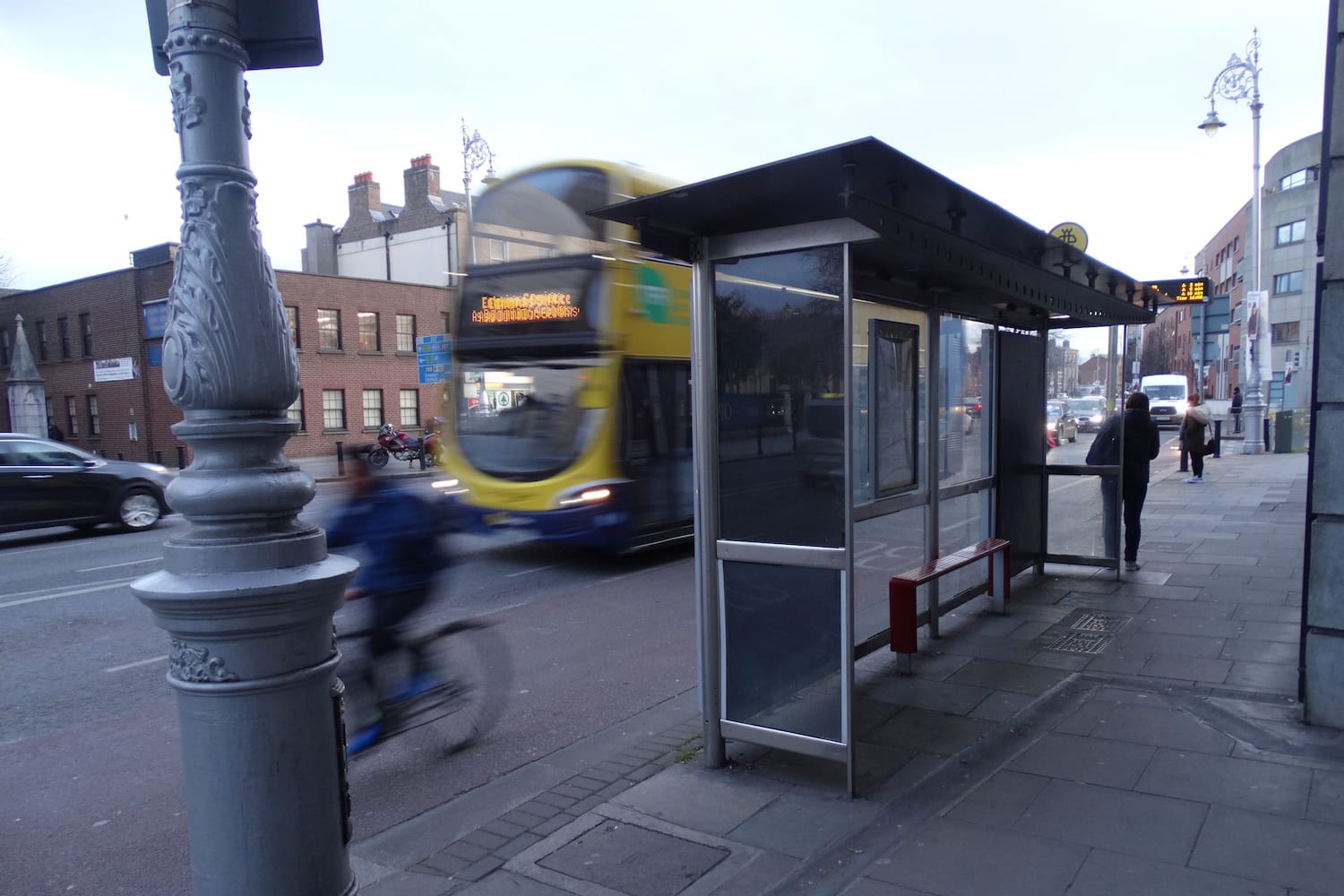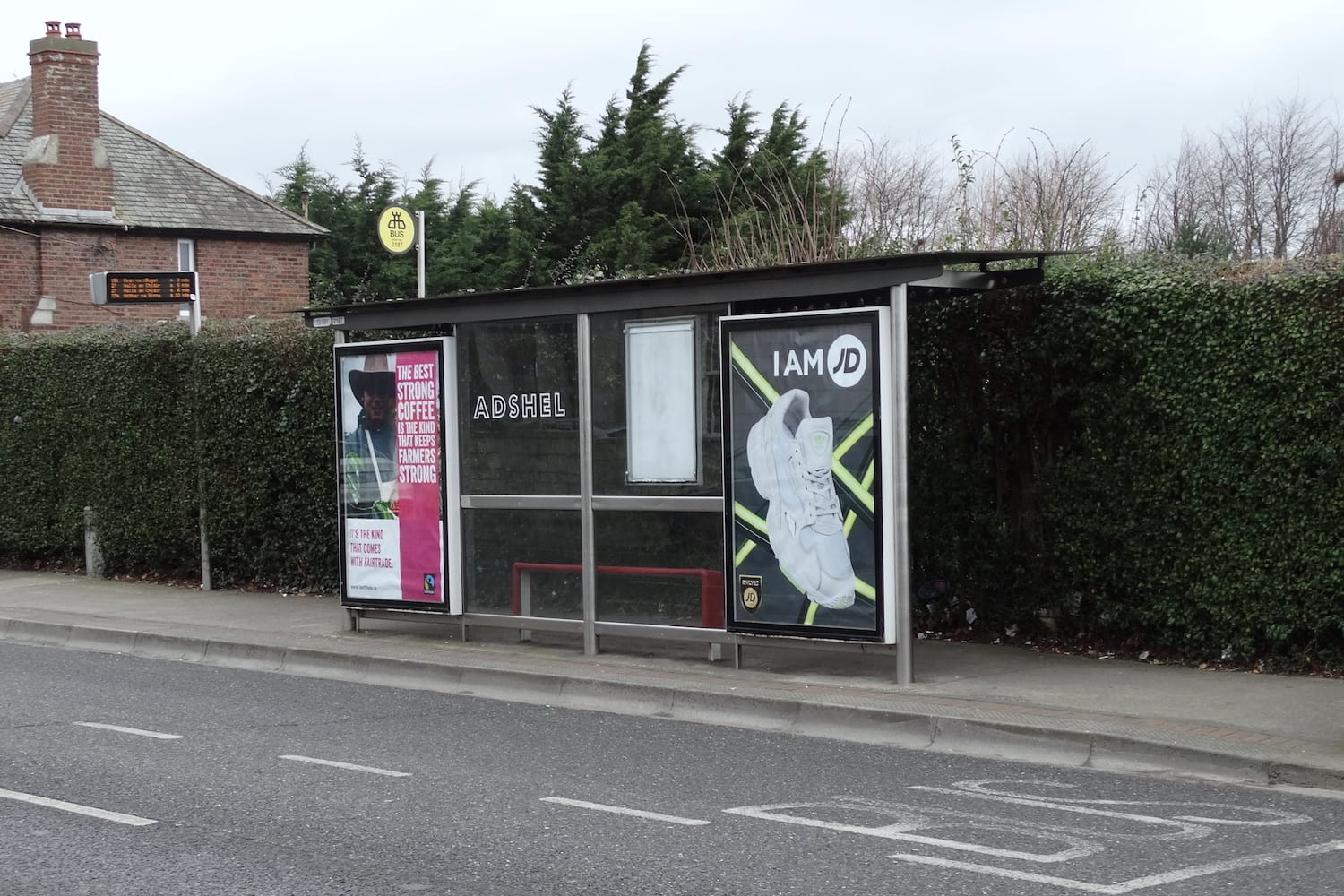What’s the best way to tell area residents about plans for a new asylum shelter nearby?
The government should tell communities directly about plans for new asylum shelters, some activists and politicians say.
Several bus stops around the city, mysteriously, face not towards the road so travellers can see when their bus is coming, but backwards.

“Annoying so, yes I have noticed that this bus is facing the wrong way,” says Amy Hayde, just as her bus pulls up alongside the bus stop opposite St Patrick’s Cathedral on Patrick Street.
Her theory? That it’s that way to shelter from the wind, perhaps.
In the few seconds that she’s taken to comment, the bus has closed its doors and pulled away.
Hayde breaks into a light jog, headed towards the quays. “Hopefully there will be no backward stop there,” she says
The Patrick Street stop is one of several bus stops around the city which, mysteriously, faces not towards the road so travellers can see when their bus is coming, but backwards.
There’s another one by a bowling club on Crumlin Road, and a couple more spotted along North Strand Road. Why were they put in backwards?
For the most common bus stops, the shelter faces the road. A commuter on the bench faces the traffic.
The backward bus stops have the shelter facing inwards to the pavement. It’s tricky to see when a bus is coming – especially if the back panels are opaque, rather than transparent.

On that brisk Thursday afternoon on Patrick Street, a sharp wind cut up the street.
But rather than shelter inside the bus stop, a group of 12 people huddled outside at one end, blocking the pavement for other pedestrians squeezing past.
At the other end, two commuters also waited on the outside, leaving the shelter empty.
Ian Dodd, a guy in his fifties, stood with his back to a building. That way, he could see the oncoming buses.
“It’s probably for the weather. Either that or they were pissed when they were making it,” says Dodd, of the backwards, unused bus stop.
“I’ve never noticed it myself,” says Dodd, as the 27 bus arrives.
It’s 4:19pm and Dodd is making his way home from town with a full bag of shopping. He picks up his bag, walks around the bus stop – which stands between him and his bus – and gets on.
It was probably because of the width of the pavement, that the bus stops were put in backwards in some places, says a spokesperson for the National Transport Authority (NTA).
“If it was particularly narrow for example, you might try to save a little bit of space by putting them with their back to the road,” he said.
That would mean you can put the wall of the bus stop right up to the curb, he says.

But the NTA only took over responsibility for building new bus stops from Dublin Bus in 2017, he said. So the position of those older bus stops would be down to engineers there.
A spokesperson for Dublin Bus did not reply directly to a question about why some bus shelters were installed backwards. Instead, they referred that query to multinational advertising firm JCDecaux.
“Bus shelters are managed and maintained by JCDecaux therefore they are best place to answer your query,” the Dublin Bus spokesperson said, by email.
JCDecaux, however, say they’re not the ones who put in these backwards bus shelters. They won a contract “to manage and maintain the NTA stock of Bus Shelters” in 2016 and took that over at the start of 2017.
“We can confirm that these particular shelters pre-date our contract with the NTA and we have not built any in this configuration since taking over the contract,” a company spokesperson said by email.
Clear Channel Ireland, another company that does advertising, had the bus-shelter contract before JCDecaux. Besides taking into account where the buses need to stop, the way a bus shelter is installed might be influenced by a number of other factors, a Clear Channel spokesperson said, by email.
That might include: “(a) pavement width for passing pedestrians / wheelchairs / buggies etc; (b) potential impact on adjacent buildings including doorways, windows, access paths etc; (c) the prevailing wind direction from which shelter is to be provided”, the spokesperson said.
It might also include: “(d) potential impact of the shelter on sight lines for pedestrians and vehicles, (e) the preexisting position of underground services at the location and (f) any other conditions required by the relevant local authority,” she said.
However, these days, the NTA aren’t putting in more backward bus stops, the NTA spokesperson said. “Any new bus stops that we’ve been putting in are all those that are facing out towards the road, rather than with their backs to the road,” said the spokesperson.
At 2.49pm on Friday evening on North Strand Road, there’s no sign of a break in the clouds.
At either end of the street are two backward bus stops. One stands on the opposite of Cusack’s pub.
“I haven’t even noticed,” says Holly Preston, as she waits at the stop with her earphones in.
The stop masks commuters from a light misty rain – giving Preston and others a dry spot.
“I probably prefer that way, I think it’s this way because of the weather,” she says.
Preston looks up the street, where a regular bus stop is facing the opposite way onto the road.
“Oh, but there is one that is not facing this way,” she says.
[UPDATE: This article was updated at 09:06 on 13 Feb. 2020 to say that we have put in a query to JCDecaux.]
[UPDATE: This article was updated at 19:12 on 17 Feb. 2020 to include JCDecaux’s response.]
[UPDATE: This article was updated at 09:31 on 18 Feb. 2020 to include Clear Channel Ireland’s response.]
Get our latest headlines in one of them, and recommendations for things to do in Dublin in the other.